SaaS Inbound Marketing: The Ultimate Guide You Need
Summary
- SaaS Inbound Marketing: The Ultimate Guide You Need
- What is SaaS Inbound Marketing?
- 4 Key Pillars of SaaS Inbound Marketing
- The Inbound Marketing Funnel That SaaS Businesses Should Be Aware of
- 7 Key Inbound Marketing Strategies for SaaS Companies
- How To Kickstart Your B2B SaaS Inbound Marketing?
- 5 Tools To Help You Build and Measure Inbound Marketing Campaigns
- How do you generate inbound leads in SaaS?
- Time To Start Your Own Inbound Campaigns
SaaS Inbound Marketing: The Ultimate Guide You Need
SaaS businesses consistently run after the best marketing strategies and try their best to keep up with the trends to attract and retain customers as much as possible. In the vast landscape of marketing strategies available for SaaS businesses, inbound marketing remains the most powerful way to drive leads.
It not only focuses on attracting customers but also nurtures long-term relationships with the customers.
SaaS inbound marketing ensures that your target audience knows about your existence, what you do, and why they should choose you. It uses a pull method to make customers aware of you without pushing any salesy tactics.
This article will teach you everything you need to know about B2B SaaS inbound marketing, how to implement it, and what tactics you can use to boost your SaaS business’s visibility and attract customers to build an inbound sales funnel.
So, before we dive in, let’s start with the basics.
What is SaaS Inbound Marketing?
SaaS inbound marketing is a type of marketing strategy that focuses on pulling your customers towards your business through a strong content marketing strategy. It works on engaging and attracting potential customers through valuable content and interactions at every stage of your customer’s buying journey.
B2B inbound marketing for SaaS companies heavily relies on particular methods of marketing that focus on customer retention, better selling, and providing the business with valuable customer data that can help in making better strategies to empower growth.
Primarily, inbound marketing for SaaS follows Cialdini’s 7 Principles of persuasion which are:
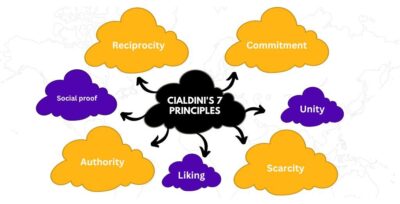
1. Reciprocity
Reciprocity suggests that people feel obliged to give back in return for something they receive. Businesses use this principle in inbound marketing in the form of giving out valuable information, free trials, etc. that can make customers likely to purchase something from them.
2. Commitment
People have a natural tendency to make choices and commit to them resulting in a greater good. In marketing, brands encourage customers to make small commitments such as signing up for their loyalty programs or subscribing to their newsletters which in turn can result in something even bigger such as purchasing their SaaS services.
3. Social proof
This principle says that people tend to do something by seeing others, especially when they’re not sure about what choice to make. This principle is frequently used in SaaS inbound marketing through customer reviews, influencer marketing, word-of-mouth, referral, social media likes and shares, and more which can help in gaining trust and credibility and influence customers to make a buying decision.
4. Authority
People will take action if they are advised to do so by a person in authority who holds some expertise in that field. In marketing, this principle is leveraged by taking the help of influential people like celebrities, social media influencers, speakers, authors, and other personalities relevant to a business’s niche.
5. Liking
People will take an interest in you if they tend to like you. And, in B2B SaaS inbound marketing, that’s what businesses try to do. They try to make their potential customers like them. They do this by building rapport, earning goodwill, understanding their customers’ pain, finding commonalities between their customers’ businesses and what they have to offer to improve their business, and creating engaging and personalized content for them.
6. Scarcity
People are more inclined towards things that are scarce, limited, or exclusive, and that’s where brands implement this principle for their strategy too. Brands create FOMO (fear of missing out) by running limited-period offers, countdown sales on their service prices, and exclusive promotions to create an urgency for customers to make a buying decision.
7. Unity
When people feel a sense of belongingness or unity towards a person, group, or even a brand, they are more likely to be a part of it and stay committed to that person, group, or brand. This approach can be used in SaaS inbound marketing by offering valuable assets and content that suggest shared values, goals, and beliefs between the brand and its customers.
4 Key Pillars of SaaS Inbound Marketing
Now that you know what inbound marketing is, it is also important for you to understand the pillars that hold this marketing strategy together. These 4 pillars are:
1. Your Website
Your website is the first pillar and most important of SaaS inbound marketing. Since inbound marketing emphasizes that your potential customers should know about your existence, having a strong content marketing strategy for your website can help you improve your visibility.
In inbound marketing, content marketing is all about creating and sharing powerful, relevant, engaging, and valuable content to attract the desired audience. It includes everything that you put on your website like blogs, ebooks, case studies, whitepapers, infographics, videos, etc.
The goal of these content pieces is to focus on your customers’ pain points, address their challenges and questions, and give them solutions. SaaS businesses can portray themselves as their customer’s well-wishers and professional advisors to build genuine trust and ultimately turn them into qualified leads.
2. Third-party Platforms
You can utilize third-party platforms like YouTube, other blogging websites, podcasts, and more to talk about your SaaS business. The goal is to entertain, educate, and inform while encouraging your customers to visit your website and learn more about your product.
Since the chances are that the majority of your potential customers might already be visiting these third-party platforms, this pillar of SaaS inbound marketing works very well if done consistently and patiently.
3. Search Engines
All of this research and application of several marketing strategies comes down to one thing – Search Engines. If not search engine, where do you plan on showcasing your website in the first place?
Search engines like Google are one of the most important pillars of B2B SaaS inbound marketing. You’ll want to create informative and SEO-friendly content to make sure that your website ranks higher on search engines. This is a never-ending practice, thus, having a strong SEO profile for your website is a must.
4. Social Media
Social media is crucial in the 21st century. Almost every generation is involved on one social media platform or the other. This is the place where you find and form relationships with your customers.
Choose the social media platforms that work best for your business and where most of your target customers spend time. For B2B SaaS inbound marketing, we believe staying active on platforms like LinkedIn, Facebook, and Twitter is best.
These are the platforms where most B2B clients prefer to get in touch with a SaaS Company like yours.
The Inbound Marketing Funnel That SaaS Businesses Should Be Aware of
The inbound marketing funnel includes 4 major stages that every SaaS business should consider:
1. Awareness
At the top of the B2B inbound marketing funnel is awareness. In the beginning, the potential customers become aware of their needs and start to find a solution. To leverage this stage of customers, SaaS businesses must create content that can relieve these pain points and challenges.
Now, the objective is to catch the eyes of the customers and drive them to your business. To make your customers more aware and informed, you can use blogs, videos, infographics, and social media posts that let your customers know about your existence.
For example, creating a short video on what your SaaS service is about can help your customers know about what you do in a more easier and engaging way.
2. Consideration
At this stage of the funnel, the customers have now explored the multiple solutions to their problem and are ready to consider one of them. So moving forward, you must showcase your B2B services as the best viable solution and guide customers to make an informed decision.
Here, the aim is to build trust and show how your SaaS service can understand their problem and give solutions. You can use whitepapers, webinars, and ebooks that can demonstrate the advantages and features of your SaaS business.
3. Decision-making
At the bottom of the SaaS inbound marketing funnel, customers are ready to make a buying decision.
Thus, you must now focus on converting the leads by offering transparent information about the pricing, demos, and reviews. The goal here is to convert the visitor into a potential buyer and offer him/her a seamless and satisfactory onboarding experience.
To influence your buyers’ decisions, you can take advantage of a testimonial page, free trials, demos, pricing page, and FAQs that can answer their final concerns and queries.
4. Retention
This end stage of the funnel is the hardest stage of B2B inbound marketing. Your SaaS business needs to work on retaining customers and turning them into powerful referrals and advocates of the brand.
This involves providing after-sale services, maintaining trust by giving regular updates and new features and inspiring them to refer you to other customers.
Doing this will not only help you gain more credibility but will also help you foster long-term relationships and turn these customers into your brand ambassadors. The customer success stories, referral programs, user guides, tutorials, and product updates are a few content pieces that come in handy at this stage.
7 Key Inbound Marketing Strategies for SaaS Companies
1. Perform robust SEO
SEO (Search Engine Optimization) will always stay at the top of the SaaS inbound marketing game. Even the data suggests that out of all website traffic, 53% of it comes through organic. Be it your content for blogs, ebooks, service pages, copy, or whitepapers, everything needs to be optimized accurately.
Make sure you’re targeting the right and trending keywords that your customers are actively searching for. Use terms and be thorough with what you want to explain in your content while ensuring that you do not overdo it else your content may seem stuffed with keywords and appear spammy.
2. Persuade them with Email
Emails are the perfect way to showcase your brand professionally. Share emails about your new updates, features, and newsletters to keep your customers interested in you and to ensure that they know everything about you.
However, make sure that you don’t send too many emails as it might frustrate your customers and force them to block you from your email list.
3. Create compelling videos
In 2016, businesses using videos for their inbound marketing for SaaS was only 61%, which has now jumped to 86%. This is because customers now prefer engaging content over any other traditional approach.
Videos are entertaining, easy to remember, and more impactful. Thus, using compelling videos that talk about your SaaS business and the solutions it offers, can easily catch the eyes of your customers.
Create rich videos that offer valuable information, address your customers’ pain points, and offer solutions.
4. Leverage social media
Social media has proven to be one of the most powerful SaaS inbound marketing strategies. People love spending time on social media and more and more B2B businesses are trying to leverage this powerful channel. You can easily connect with a wide range of audiences through various social media platforms.
For B2B, we recommend you choose platforms like LinkedIn, Facebook, and Twitter to connect with your potential audience.
You can share content, run ad campaigns, communicate with followers, build trust, and drive website traffic with these great social channels. You can also build communities on these social platforms so that more and more people can know about your SaaS services while helping your customers.
5. Do ABM
ABM stands for Account Based marketing and this way of SaaS inbound marketing focuses on a selected set of high-value customers rather than the whole public.
ABM is tailored with unique and personalized marketing efforts, resulting in better engagement and higher conversion rates.
If you wish to learn what ABM marketing can do for your SaaS business, you should learn it from Salesloft. To make their communication more personalized with their potential customers, Salesloft developed a direct mail ABM campaign and earned whopping 50% more representatives.
6. Voice Search Optimization
Voice search may have joined the marketing game recently but it has become very popular very quickly. SaaS brands that are using it are finding it easier to stay ahead in the market while also engaging the customers effortlessly.
With such growing popularity, SaaS businesses should optimize their website content to answer common voice search queries.
You can optimize your content to fit the voice search by optimizing it with long-tail keywords, humanly written search queries, and naturally sounding phrases to capture more organic traffic coming through voice search.
7. Leverage UGC
User-Generated Content (UGC) is a very powerful SaaS inbound marketing strategy in 2024. People are not ready to fall for salesy tricks and bold heavy ads. They are more inclined towards something that is coming from a genuine buyer like them.
Here, content like testimonials, reviews, social comments, and case studies can be very helpful in gaining the trust of the customers.
How To Kickstart Your B2B SaaS Inbound Marketing?
Now that you know the best practices and strategies for B2B SaaS inbound marketing, here’s a simple step-by-step plan to implement it:
1. Set a clear goal
Before you start your inbound marketing campaign, you must know why you’re starting it in the first place and what you want to derive from it.
Ask yourself:
– Why do I want to start this marketing strategy?
– Is my goal to drive sales?
– Is my objective is to improve my brand goodwill and visibility
– Is my goal to improve the traffic on my website
Once you set a clear goal you can now move ahead to more actionable steps.
2. Determine your target audience
Once you know why you’re targeting people, it’s time you decide whom you want to target. The number one step to start your inbound marketing is determining your target audience based on various demographics:
- Age
- Interests
- Designation
Knowing these will help you understand what content types they may enjoy more, where they stay active online, and whether or not they will be the right person to make the buying decision if you win on engaging them at last. Laying this foundation will help you move forward smartly.
3. Track their journey online
See how your target audience is engaging with your website and which devices are they using. You can use tools like Crazyegg to track the journey of your customers once they land on your website.
4. Understand their pain points.
Understanding the challenges of your customers is the job half done. Once you know what they’re struggling with will help you understand how you can offer them the solution.
Their questions become your answers and you can easily guide them on why your SaaS services are best for them, what solutions you can offer, and how easily you can resolve their problems.
5. Build a user-friendly website
Building a website that is too cluttered, shabby, full of CTAs, and low-quality content can make your customers leave and never come back. This is the reason why building a website that looks clean and easy to understand is important.
Your website is your full-time employee. It works 24/7, takes no leave, and is active even when you’re sleeping. So, it’s important to invest in your website and make it user-friendly.
It must be able to guide the customers in the right direction. Your service pages and pricing pages should be visible clearly. The language must be brief and to the point. Create a contact page where they can mention their concerns or find the contact details to connect with you.
6. Offer them reliable solutions
Once you manage to determine your audience and build a website that is easy for them to use, it’s time to get to the work.
As discussed above in this article, you can offer them valuable solutions by creating high-quality content pieces like blogs, ebooks, white papers, infographics, user guides, checklists, testimonials, research reports, demos, free trials, videos, podcasts, and more from which they can make informed decisions.
7. Stay connected with them
Building a website and waiting for your customers to come to you is a waste of time. In SaaS inbound marketing, you’ll need to find ways to stay connected with them.
Execute email marketing campaigns and connect with them on social media platforms to stay in their eyes and not lose touch. A mild and organic reminder that you’re there can do wonders in converting potential customers.
8. Gain their trust
Again, your goal is to make sure that your potential customers choose you and stay with you for a very long period. You can start by:
- Generating more testimonials from your existing customers
- Publishing customer stories
- Offering free trials and demos
- Offering them a seamless onboarding experience
- Listening to and resolving their after-sales issues promptly
- Being available at the times when they need you
- Ask for their feedback regularly so that they know they are being heard and valued
9. Utilize tools
There are several online tools that you can utilize to up your B2B SaaS inbound marketing game. You can use tools to understand your buyer’s persona, track their journey, communicate with them in real time, and much more.
We will deliver more about the type of tools you can use in the following section.
5 Tools To Help You Build and Measure Inbound Marketing Campaigns
The best tools that SaaS companies can utilize for b2b inbound marketing are:
1. SEMRush
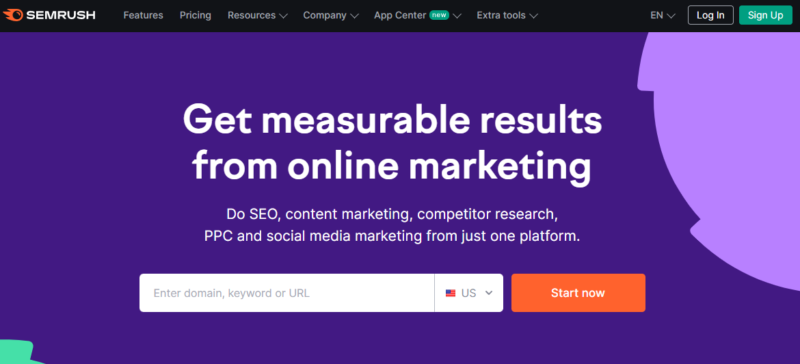
Semrush is a marketing tool that offers a multi-disciplinary approach to SEO, PPC, content marketing, and competitor analysis. The user-friendly interface helps you dive right into in-depth keyword research, which reveals important insights regarding search trends and competitors’ strategies.
Offering a rich set of functionalities, such as backlink analysis and website audit, Semrush provides a chance to optimize your online presence in the right direction. Its intuitive interface displays data in a visually engaging manner, and users regardless of their level can easily understand complex metrics.
2. Google Analytics
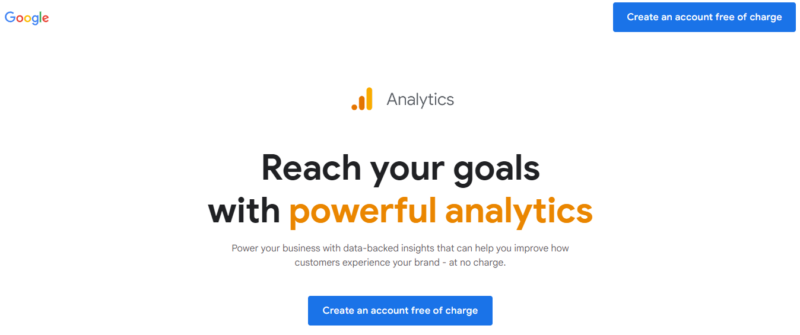
Another great tool for B2B inbound SaaS marketing is Google Analytics This tool helps you track your website’s performance while also giving insights on your users’ journeys. With Google Analytics, you can see how much time your visitors are spending on your website, where they are clicking, and which pages are gaining the most traction.
You can optimize the pages that are not gaining enough traction and work on improving your overall website.
3. Hootsuite
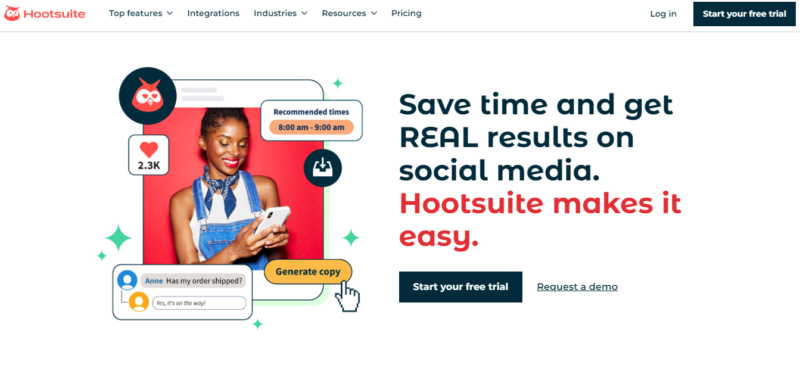
Hootsuite is an amazing channel to manage and schedule your social media marketing activities in one place. This inbound marketing tool allows you to schedule posts within its dashboard and those posts can be published on all your linked social channels like X, LinkedIn, Facebook, Instagram, etc.
You do not need to open every individual platform to publish a post, Hootsuite does it all for you in a more managed and easier way. The use of the tool is free and if you wish to leverage its more advanced features like multiple users advantage or link of multiple social channels, then you may go for its premium plans.
4. Hubspot CRM
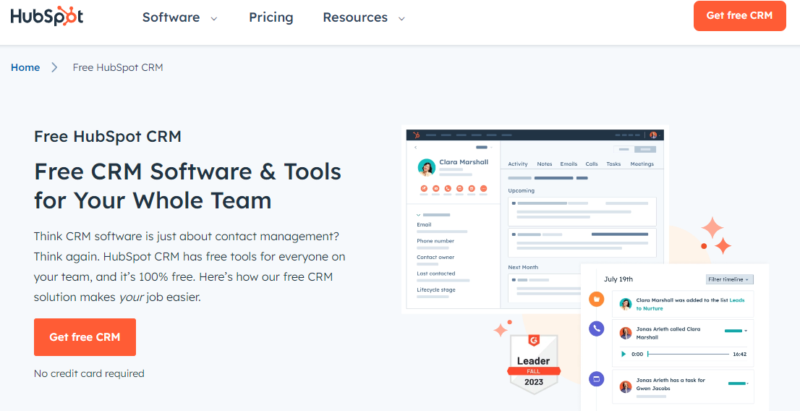
Hubspot CRM is designed to streamline the process of sales and marketing. You can store the data of your customers and use it to understand them better. Through Hubspot CRM you get access to amazing features like email integration, pipeline tracking, contact management, and automation tools to boost efficiency.
HubSpot CRM provides insightful data and reporting capabilities that allow businesses to gain valuable insights into their sales performance and customer interactions.
5. Canva
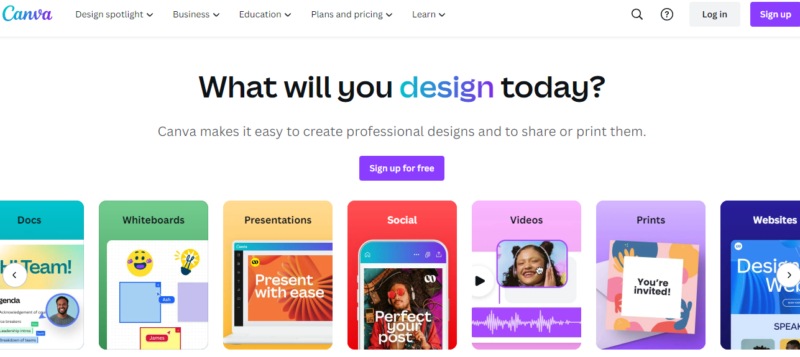
Canva is a very easy-to-use image-creation tool. You can use its’ free version in the beginning and with time if you feel the need for it, you can buy its premium version as well which is quite affordable.
You can use Canva to create your blog images, infographics, social media posts, newsletters, pamphlets, and much more. There are hundreds of amazing templates that you can start with without even having any design knowledge.
How do you generate inbound leads in SaaS?
Now that you know the pillars, principles, best practices, and tools for SaaS inbound marketing, let’s start understanding how you can actually generate leads through it:
1. Keep your customers happy
Remember, whatever you’re doing, you’re doing it for your customers, thus make sure that they are always happy. Keep your customers delighted through ongoing engagement and value reinforcements.
Take feedback, conduct post-sales surveys, and give them a platform to share their views and opinions about you. Listen to them and work on them to offer seamless and pleasant experiences to your new and existing customers.
2. Host webinars and events
Hosting webinars and events for SaaS inbound marketing is a great way to exchange information between B2B organizations. Your SaaS business gets a platform to describe your benefits, brand values, and features while also allowing your customers to ask questions and resolve queries.
Webinars and events help in building long-lasting relationships with your customers.
3. Give free trials
Giving a free trial for your service can help you build a sense of trust and reliability among your customers. Through free trials, they can use and realize the true potential of your services which will ultimately help them in making an informed purchasing decision.
4. Collaborate with influencers and brands
You can form partnerships with influencers in another brand in your niche to improve your visibility through their channels while also gaining trust.
Influencers who have pre-existing followers can help you reach your target audience through a single video or post. This way you do not need to reach out to each individual since the influencers can do it for you.
5. Offer helpful resources
As we talked about in this article, SaaS inbound marketing is all about offering valuable information through blog posts, eBooks, podcasts, whitepapers, and more. Providing your potential customers with such resources consistently can help you boost conversions.
Time To Start Your Own Inbound Campaigns
B2B SaaS inbound marketing is a great way to connect with your audience and convert them into high-quality leads naturally. It isn’t just a strategy, it’s a mindset.
Use a customer-centric approach that prioritizes valuable creation and nurtures B2B relationships. By understanding the best practices, and core principles, and implementing effective strategies based on insights and feedback, SaaS businesses can unlock the full potential of inbound marketing to drive growth, foster customer loyalty, and achieve sustainable success in today’s competitive landscape.


